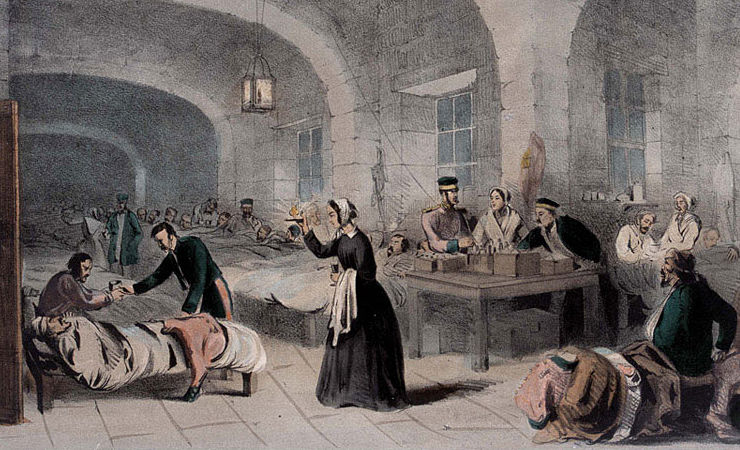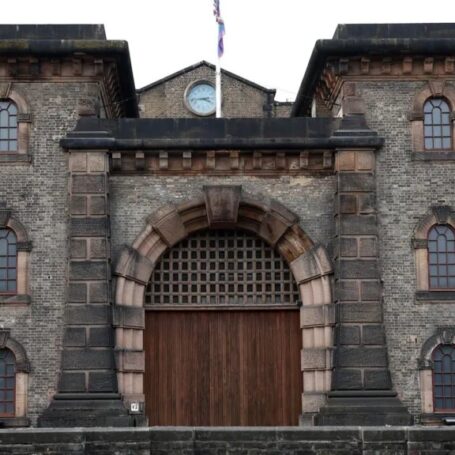Florence Nightingale at Home (with COVID-19)

In the time BC (Before COVID), I used to dabble in the history of nursing. It was a privilege to be asked to endorse Florence Nightingale at Home by Paul Crawford and his colleagues. This is the capstone of a project to re-assess Miss Nightingale’s life and develop new materials that was intended to commemorate the 200th anniversary of her birth in 2020. Public celebrations were displaced by the emergence of the SARS-CoV-2 virus and the measures adopted to control transmission of the infection.
I suspect that Miss Nightingale herself would not have been too displeased. Her dislike of spectacle and ceremony associated with her own life is well-documented. However, it would be unfortunate if the lack of public attention meant that this book passed unnoticed, not least because of the relevance of its themes for future students of the pandemic. The virus has related to and ordered space in many of same ways as Miss Nightingale and her contemporaries. There is truly scope for a study of COVID-19 at home.
The authors begin by noting the sentimental treatment of the home by Victorian writers and its centrality to ideals of morality, nation and Empire. Although Miss Nightingale herself subverted many of these ideals, notably by turning her own bourgeois home into a workplace and by her overt sympathies for Indian nationalism, she was also adept at exploiting the imagery in her own agendas for social, spiritual, and military reform.
The Victorian home was constructed in opposition to the upheavals of the Industrial Revolution, which had led to large-scale population movements, rapid urbanization, and the destruction of traditional deferential class relations. The home, as managed by home-making women – mothers, daughters, aunts, servants, was the key to restoring order and stability in this turbulent world. More perhaps than most women of her class, Miss Nightingale was aware of the gap between this imagery and the actual lives of the industrial and agricultural laborers in the villages around her family estates in Derbyshire and Hampshire. These could, though, be re-made by the work of ‘health missioners’, secular equivalents of populist evangelism. Her main focus, however, was on the civilization of institutions by exporting the models and values of the home into barracks, hospitals and infirmaries.
The authors squeeze in a reference to the COVID-19 pandemic at the very end of the book but their analysis could be extended much more widely. A conspicuous feature of the pandemic has been the idealization of the home as a place of safety and refuge. Public spaces and public life are sources of danger and risk, while homes shelter and safeguard the occupants. We are all encouraged to ‘work from home’ much as Miss Nightingale did for the latter part of her life when she was incapacitated by brucellosis. Modern technology may bring people and communications to us more rapidly and directly than she was able to send and receive letters or to summon the great and the good of late Victorian England into her presence. However, it is just as much a mode of imprisonment, where the world can only be experienced vicariously, just as Miss Nightingale’s work on Indian public health reform depended on surveys and letters from local informants.
This is, of course, a version of the home that is very bound to inequalities of class, gender and generation. As the authors make clear, Miss Nightingale was at some level sensitive to her privilege. Her personal tastes in food and furnishings were simple and her servants were well-paid – but they were still expected to abide by her spiritual expectations. Her self-isolation depended upon their labor, and that of the tradesmen who delivered food parcels and other supplies to the house. Working-class Britain still went out to work and came home to living conditions that were not seeing a large-scale benefit from public health reform until the very end of the 19th century. The life-styles of the upper and professional classes rested upon the hidden labor of Disraeli’s ‘other nation,’ which took the risks of production and distribution upon which those lives rested.
Working from home in the COVID-19 pandemic assumed a service-sector job that could be done remotely from a household with sufficient resources to afford space and reliable broadband connections. Anyone who had to make or do stuff was excluded. Even within a professional class, epidemiologists were better served than surgeons. The UK has long built smaller houses than many other countries. Their deficiencies became evident as families struggled to meet work obligations and home-school children in open-plan living spaces or cramped bedrooms. Home offices, even as temporary buildings in gardens, are a luxury for the affluent. For many families, of course, home was an overcrowded, multi-generational household, a shared house of bedsitting rooms (studios) or temporary homeless accommodation, where the kitchen might be an electric ring and a shelf. The divides were as bitter as any in Victorian Britain.
These homes remained sources of risk. Better-off seniors could close their doors and rely on deliveries. Poorer people do not have capital to tie up in food stocks or pay surcharges for food to come to them. They have no choice to but to go out into the world, risk infection and bring it home, where crowding means that it is likely to be freely transmitted. Physicians might advise continuous face covering at home but this is mainly an index of their own class blindness. Within homes, safety could not be guaranteed. Many late Victorian social reformers were driven by the evidence of physical abuse, neglect and sexual abuse within the sacred space of the home. Their legacies are still with us in the shape of great charitable organizations – but many of these have fallen silent in the face of the pandemic despite the emerging evidence of its dangers for women and children. Their professional staff simply joined the great retreat into domesticity, preferring to deal with service users by phone of video link rather than personal connection. This certainly would have horrified Miss Nightingale and her contemporaries, for whom direct engagement was critical.
The professional classes have had a good pandemic. Life has been organized to afford them maximum protection and minimum risk. Their salaries have been paid and their savings have risen in the absence of anything on which to spend their income. Others have been less fortunate. Their imprisonment has been much less congenial and they have been forced to assume the risks outsourced by the more affluent. Class inequality in health outcomes has, if anything, been amplified rather than muted. We have never all been in this together.
The ‘Condition of England’ novels of the later Victorian period dramatized the gulf between the homes of the rich and the poor in an apparently prosperous nation. Who, I wonder, is working on the COVID-19 book – fiction or non-fiction – that will similarly excoriate the indifference of the professional classes, whether they lean to the left or the right, to the lives and labors of those who made their survival possible and bearable?































































































Very interesting, Robert!!! I’ve appreciated ton article for the birth anniversary of Miss Nightingale. Thank you
Ciao
mirella